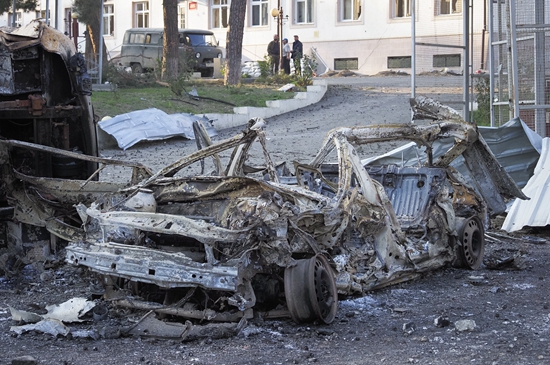
By Li Dapeng
On September 27, an armed conflict broke out between Armenia and Azerbaijan in the disputed Nagorno-Karabakh region (hereinafter referred to as "Naka region" for short).
The outbreak of conflict in the Naka region is a result of multiple contradictions. The root cause lies in the territorial dispute between Armenia and Azerbaijan in this region left over from history. However, the long-simmering tensions between the two sides, along with the military support and political intervention from a third party, have also made the conflict even more complicated.
History has shown that conflicts triggered by territorial disputes and then intertwined with ethnic, racial, religious, historical grievances, etc., tend to evolve into "national wars". National wars, once breaking out, will be rapidly escalated and difficultly handled through political and diplomatic channels with limited effect. Even if a truce is reached not long after the breakout, they will accumulate strength for the next round of conflict. This round of confrontation in the Naka region has had spillover effects. It’s reported that militants from Syria have been found in the Naka region.
Today, in the geographic hotspots including the Middle East, North Africa, West Asia, and South Asia, many countries are in a state of tense standoff or fierce confrontation due to territorial, civilized, and cultural conflicts. There is no mitigation trend in the short term, and some external powers also make direct or indirect interference to various extents. The Naka region issue has long been associated with neighboring countries in Asia and Azerbaijan, including Russia, Turkey, and Iran in history. Although these countries themselves have also been entangled in security issues, their top priority is to stop the security situation in the Caucasus Mountains and even the surrounding areas from becoming even more complicated and deteriorating.
It can be judged that the real problem these countries face is not to determine whether to intervene or not; instead, they have to intervene in the conflict as soon as possible, and mull over the timing and the way to intervene.
In this round of fighting in the Naka region, the mechanized warfare and informationized warfare coexist. The armed forces of both countries have been inherited from former Soviet army but limited by weak national strength; the armed forces are dominated by land forces and land warfare equipment, while are weak in air power with aging combat aircraft. The geographical conditions of the Naka region determine that the two sides will engage in land wars backed by limited airpower. Nevertheless, the use of unmanned aerial vehicles (UAVs) in this round of conflict is eye-catching. UAVs have become a major part of the Azerbaijani air force in combat. The Armenian side mainly used portable air defense missiles, air defense artillery, and electronic warfare system to respond. Its operational application of electronic warfare system has also drawn much attention.
At present, the signs of conflict escalation have emerged, and both sides have begun to apply ballistic missiles to attack each other's important targets. The Azerbaijani side has used Israeli-made LORA short-range ballistic missiles to cut a bridge linking Armenia with the Naka region. The Armenian side threatened to use Iskander short-range and 9K79 Tochka ballistic missiles to counterattack. The missiles mentioned above are all tactical missiles characterized by strong penetration capability and great damage power, mainly used to strike the enemy’s command posts, communication hubs, airports, air defense positions, military bases, and assembled troops. Neither country has nuclear capabilities and will not equip the ballistic missiles with nuclear warheads. The use of ballistic missiles is more of a strong signal showing that any target of the other side may be destroyed.
The escalation of the conflict in the Naka region seems inevitable. The dominant mechanized warfare determines that this round of crossfire in the Naka region is a war of attrition. National mobilization by both sides indicates that the conflict will be prolonged. Information-based combat forces, including the UAV, electronic warfare, and air defense system, have played an important role in the conflict, indicating that this round of fighting in the Naka region is sure to be another “testing ground” for advanced weapons and serves as an opportunity for other countries to intervene. If the weapons of sensitivity, like ballistic missiles, are allowed to go unchecked and unconstrained, the two sides may resort to even more lethal weapons, then the risk of entering a full-scale war between Armenia and Azerbaijan is bound to increase sharply.













